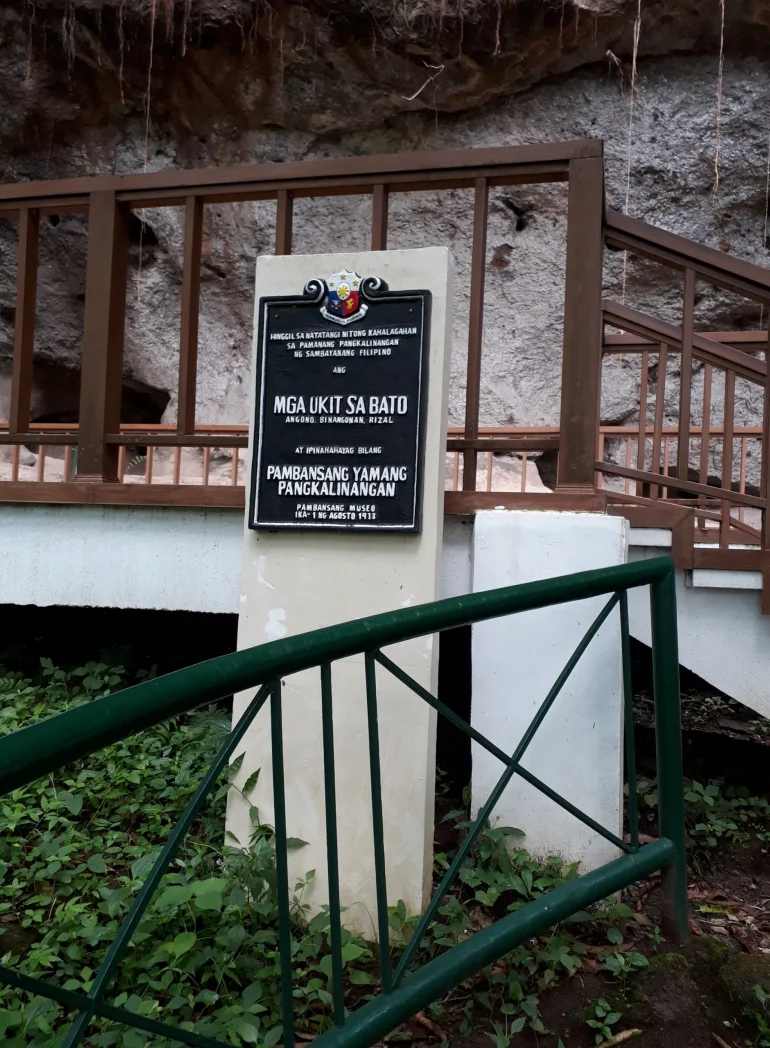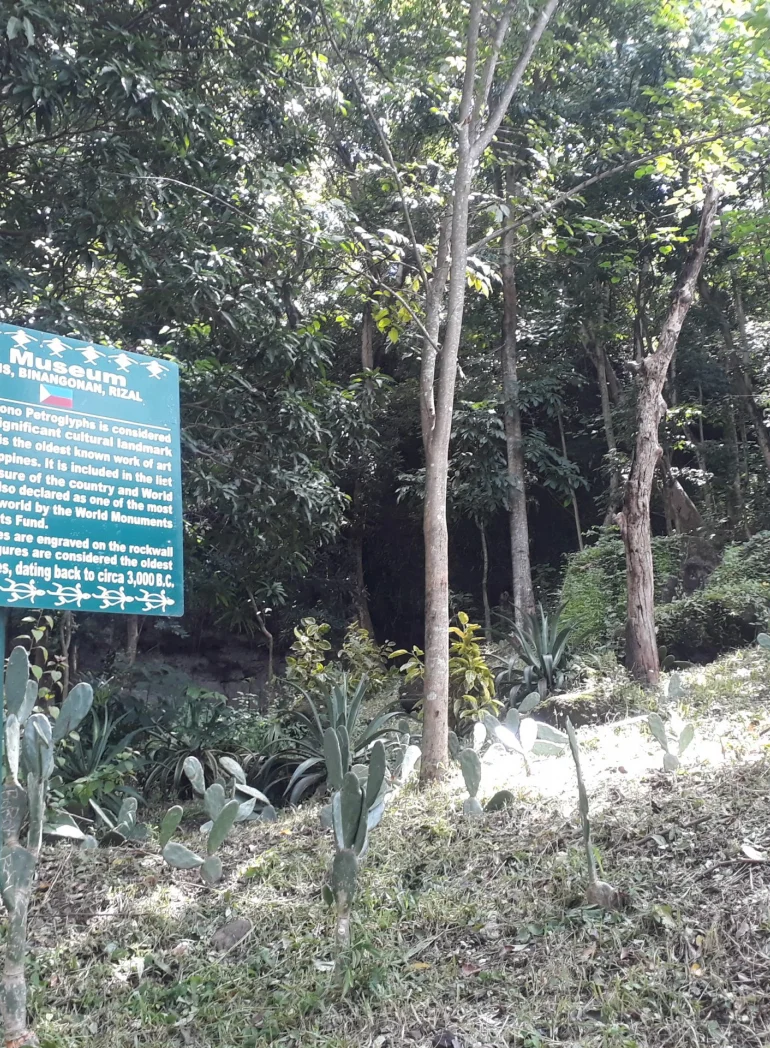Angono Binangonan Petroglyphs
The Angono-Binangonan Petroglyphs is composed of zoomorphic and geometric figures engraved on a rock shelter found at the border of the municipalities of Angono and Binangonan, province of Rizal, hence its name. A total of 179 distinct figures have been discovered as of this writing.
The petroglyphs are carved on a volcanic ash deposit known as tuff which belongs to the Diliman Tuff of the Guadalupe Formation. Tuff is a relatively soft, poorly consolidated porous rock that is usually formed by the compaction and cementation of volcanic ash ejected during a volcanic eruption. Its color varies from light grayish to buff.
Since tuff is a relatively soft rock, markings can easily be made on its surface. However, it is not known whether the rock arts were etched using stone tools or metal tools.
Although fossilized leaves of Euphorbia family, bits of wood and teeth fossils of deer and elephants were recovered which gives the formation a Pleistocene age (an age that began about 2.6 million years ago and lasted until about 11, 700 years ago), the age of the petroglyphs itself cannot be established.


